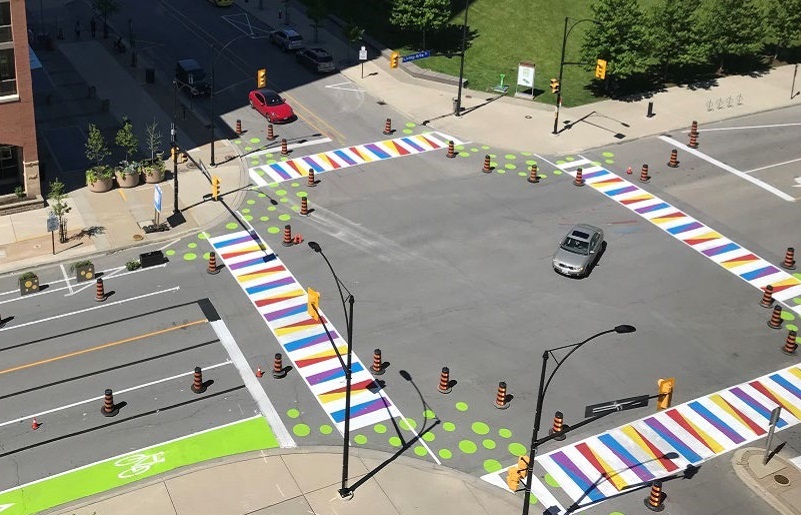In support of a safe and active transportation network, the Bramalea SNAP Action Plan recommends a series of enhancements to the existing pedestrian and cycling routes, including safe pedestrian crossings and multi-objective road diet improvements in key areas.

What is a Road Diet?
A road diet is all about reclaiming street space for other roadway users. It usually involves narrowing or eliminating travel lanes to calm traffic and increase the safety of all road users. It can also help discourage non-local traffic on local roads.
A road diet can include:
- Widening sidewalks
- Adding bike lanes
- Reducing the number and width of automobile lanes
- Adding vegetation such as street trees or planters
- Making the sidewalk-to-sidewalk distance in crosswalks shorter
- Using bulb-outs/bump-outs or curb extensions
Road Diets for the Bramalea SNAP
As part of their efforts to increase active transportation and community safety, the City of Brampton is interested in bringing a road diet approach to key roads.
A Safe and Active Transportation Network is one of the six themes of the Bramalea SNAP Action Plan. Locally inspired objectives for this theme — gathered through workshops, surveys, and engagement — include safety for pedestrians and cyclists, traffic calming, and supporting active transportation.
One of the recommended actions in the action plan is conducting multi-objective road diets on Kings Cross Road, Balmoral Drive, Finchgate Boulevard, and Eastbourne Drive.
This work will involve further study, and community engagement for input on designing inclusive, welcoming, and animated streets.
Interested in getting involved? There will be opportunities to participate and provide input. Contact Justyna Braithwaite at justyna.braithwaite@trca.ca or (437) 880-2409 to learn more.
In Collaboration With:


